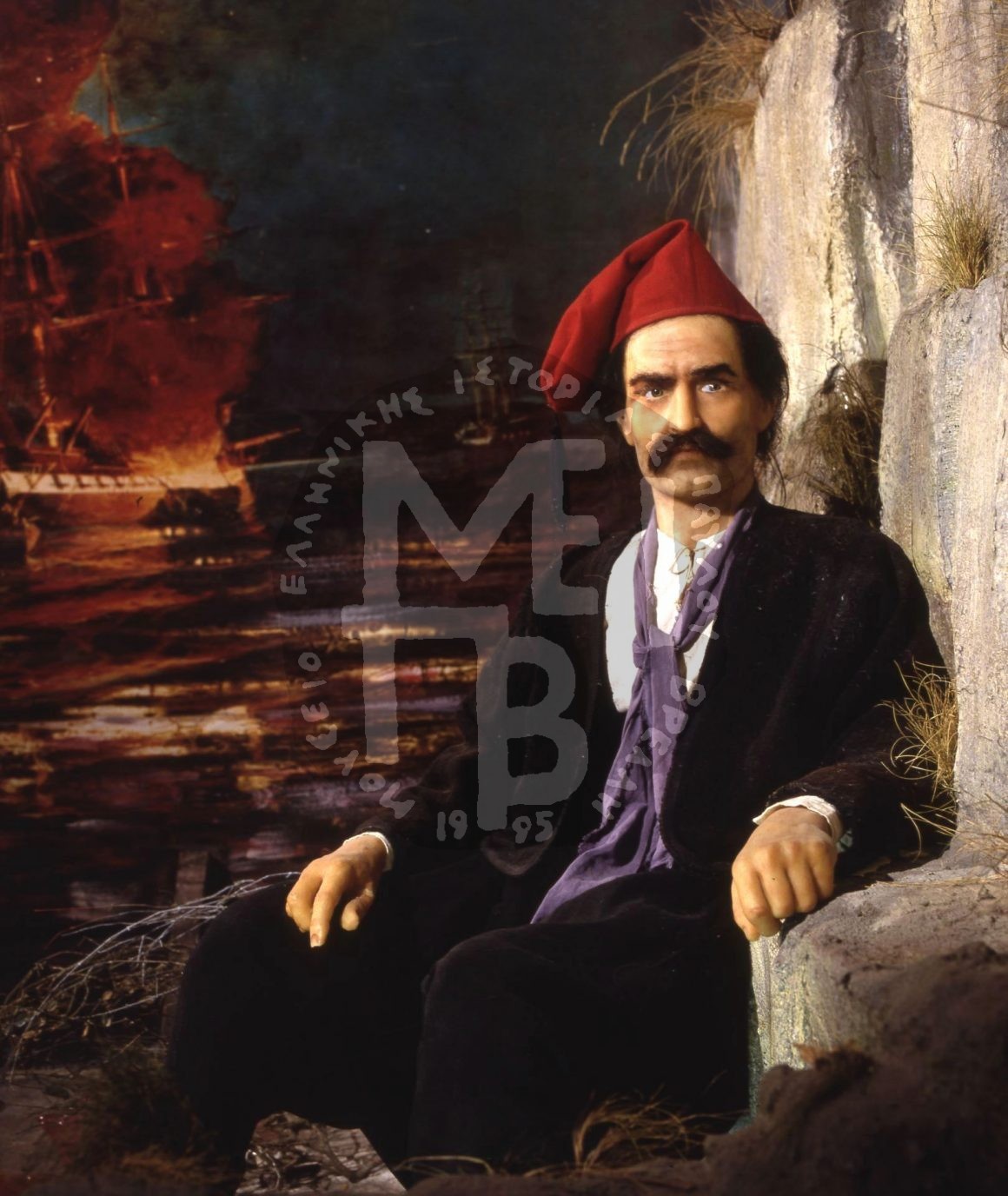“The contribution of our islands in the war of independence of 1821 was of great importance, from the beginning of the Cause. After the conversions of merchant ships into warships by our chief captains, the Greek fleet wrote its own history. One of the greatest glorious naval figures of the Cause is captain Konstantinos Kanaris, from the island of Psara. His feats turn into legends, well known all over the world.
The night of 6 to 7 June, 1822, he burnt down the flagship of the Turkish fleet, which had destroyed the island of Chios, along with 2,000 Turks and the admiral, Kara-Ali. Besides being an important achievement, this action boosted the fighters’ morale. On October 28, 1822, he made sure the Turkish vice-flagship became prey to the flames. In August 1824, he burned down Hosref-Mehmet’s pasha big frigate that had destroyed Psara. The same month he did the same with another ship in Mitilini. In August of the following year, he took part in an expedition against the Turkish fleet in Alexandria, under the command of Manolis Tobazis.
During Otto’s reign he obtained the rank of Admiral. In 1844, he was appointed Naval Minister and in 1848, he became Prime Minister. He held these two posts in 1864-5 too, during the reign of George the first. In1877 he was president of the all-party government.
That fearless captain of fire ships was always simple, modest and affable.
The observer’s eye is sunk in one of the gaps behind the theme of Kolokotronis; two great figures who acted on land and at sea respectively. Along with Kanaris we also see the burning of the Turkish flagship in Tenedos. His face shows both his determination and his inner strength. I processed the photo in the background myself and at the same time I tried to give the right hue using warm colors on the walls, so that the lighting would attribute the tension of the moment.
I make the most of the space along the horizontal axis, isolating, thus, the fight on land and that at sea. The vertical axis –with the exception of the two emergency exits– is developed by placing part of the “Kalpaki” cave and the theme of “Kolokotronis in prison” below that of “Kanaris”; over it the composition of the “Mountainous Operational places–Surgeon’s Quarters” and up and diagonally that of “Rupel”. There are four themes in total on the vertical axis, each one with different setting and distance.”

